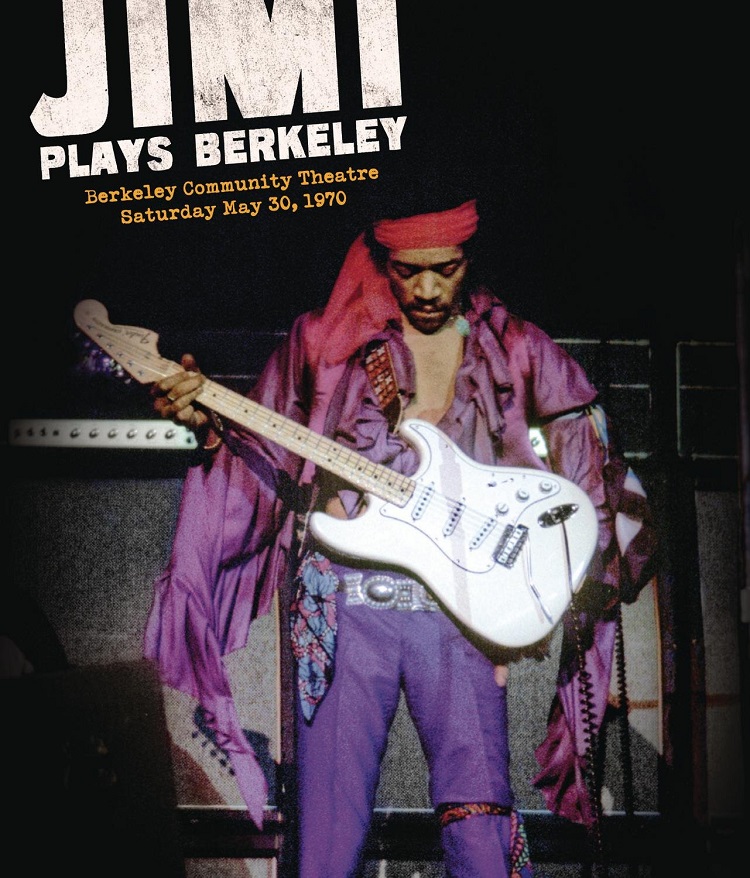
The newly re-mastered film Jimi Plays Berkeley (1971) is an incredible document of its time. Back in the late ’70s, during the “golden age” of the midnight-movie phenomenon, I saw it. Whether it was because of the late showing, or whatever else, I did not remember it as being such a political movie. Rather than being a simple document of Jimi Hendrix playing a smoldering show, Jimi Plays Berkeley captures the entire controversy surrounding the concert. While on one hand, I feel that the film is flawed by all of the extraneous footage, on the other, the tumultuous cultural atmosphere that the movie captures is certainly fascinating.
Sony Legacy have just released Jimi Plays Berkeley on DVD and Blu-ray. They have gone back to the original 16mm negative to digitally transfer it to high definition. There is only so much they could do however, considering the source. Much of the film is murky and even out of focus. And most disappointingly, the hand-held shots seem to have been done by some very stoned cameramen. At times, while Hendrix is creating some of the most amazing sounds imaginable, the camera is focused on his tapping foot!
Like I said, it is a movie of its time, and the filming of a rock concert was extremely primitive (most of the time). Woodstock (1970) was certainly done right however, so the know-how was available, if not utilized. Speaking of Woodstock, one of the weirdest moments of the film captures a group of hippies protesting in front of the theatre showing it. Their argument? “We made it, we were there! It should be free!” Some guys from the tavern next door come outside and get into it with the hippies, which is pretty funny. No fisticuffs are exchanged, but one of the men sums up the stupidity pretty succinctly. He just tells the hippies to either pay and see the movie or go home.
The biggest problem seems to be the fact that Hendrix chose to play two sets at the intimate Berkeley Community Theatre, and the tickets sold out immediately. There are a lot of disappointed fans outside who desperately want to get in, but cannot. Obviously, Hendrix’s idea of playing a more intimate show was meant as a gesture of goodwill, which unfortunately backfired due to his huge popularity.
He knew nothing of the near-riot brewing outside of the theatre however, and played two smoking sets. Another choice the producers made was to present the music in their own idea of how it would best play. This may be a minor point, but I think it would have been more effective if they had just filmed a straight concert. For example, Jimi’s amazing “Star Spangled Banner”/ “Purple Haze” was his set-closer, with “Voodoo Chile” as the encore. For some reason, the medley is shown in the middle of the set. I guess they wanted a highlight midway in the film, but they should have just trusted Jimi’s instincts with the pacing of his set.
A nice bonus included here is an audio-only recording of the entire second set. This is where we see just how Hendrix structured his concerts and he did so brilliantly. The surround sound of this concert is outstanding also.
Jimi Plays Berkeley was filmed May 30, 1970, less than four months before his death on September 18. He had disbanded the Band of Gypsies, but retained Billy Cox on bass with Mitch Mitchell back from the Experience trio on drums.
Jimi Hendrix became a legend in just four short years. Unfortunately for his millions of fans though, relatively little film of him performing exists. While Jimi Plays Berkeley is flawed, it is one of the few surviving documents of him in concert. For that reason alone, it should not be missed. And I must give props to Sony Legacy for doing the best they could with the material they had to work with – and the bonus audio concert is a nice extra touch.